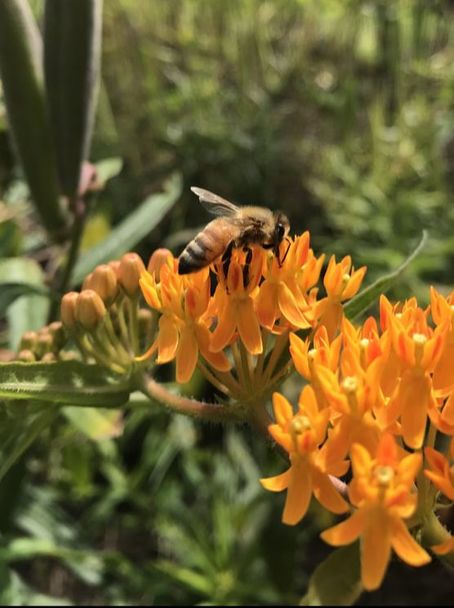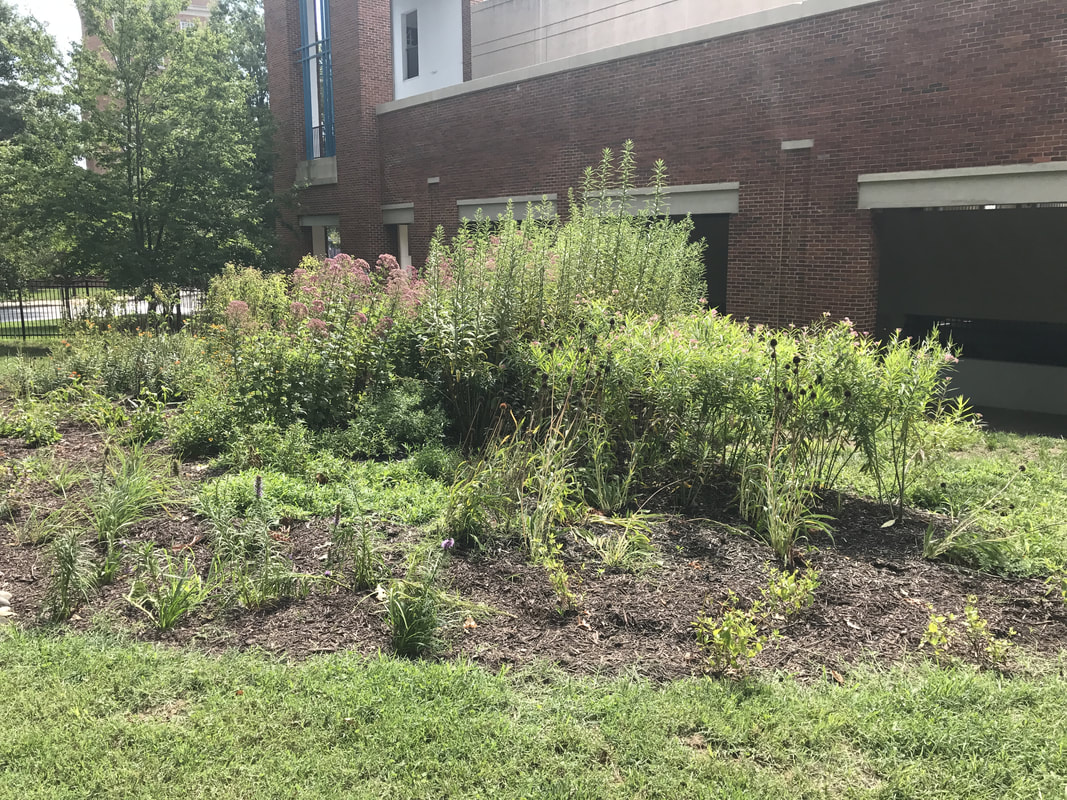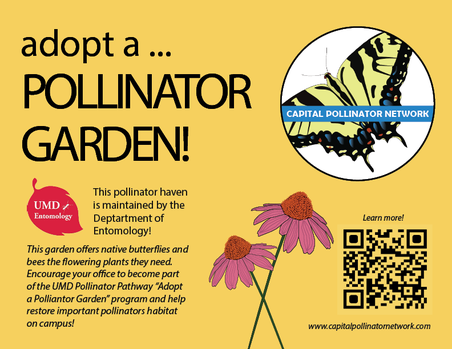Adopt a Polliantor Garden
The "Adopt a Pollinator Garden" is an outreach and education program encouraging UMD departments and offices to plant and maintain pollinator-friendly gardens.
The program is currently piloting a pollinator garden at the UMD Arboretum. The vanEnglesdorp Bee Lab adopted the Native Bee Wall and Garden (pictured below). Download our garden establishment guide and pollinator planting lists to create your own pollinator haven!
| |||||||||||||||
Establishing a Pollinator Garden
STEP 1: SITE SELECTION
Selecting a good site is crucial for the success of a pollinator garden. The site should be close to the people responsible for its maintenance for ease and accessibility. The site should be relatively visible both to pedestrians for public awareness and to those maintaining it for weed monitoring.
STEP 2: SITE EVALUATION & PLANT SELECTION
STEP 3: SITE PREPARATION & PLANTING
SITEP 4: MAINTENANCE
Selecting a good site is crucial for the success of a pollinator garden. The site should be close to the people responsible for its maintenance for ease and accessibility. The site should be relatively visible both to pedestrians for public awareness and to those maintaining it for weed monitoring.
STEP 2: SITE EVALUATION & PLANT SELECTION
- It’s important to know the soil moisture and sun exposure of your chosen site. These two factors will help determine what plants will thrive in the area.
- Plant choice is
- Plant in the spring through the summer for best results and plant establishment rates.
STEP 3: SITE PREPARATION & PLANTING
- Clear the plot with shovels to loosen compacted soil and remove all weed root systems.
- Cut “X”s in the weed barrier appropriate for the size of the plant.
- Place plants in holes deeper than the plug to encourage root establishment and fill in gaps with loose soil.
- Mulch around the plants for water retention and weed prevention. (Roughly one bag of mulch covers about 10 ft2 at a depth of 2.5 inches.)
- Create a clear delineation of the garden boundaries with landscaping stones or other boundaries.
- Add educational signage
- Water regularly!
SITEP 4: MAINTENANCE
- Immediately after planting, your new pollinator garden requires frequent watering to help the plants take root.
- Weeding regularly will help keep the pollinator garden healthy and ascetically pleasing.
- Enjoy the bees and butterflies your garden attracts!
Pollinator Planting List
All of these plants are native to Maryland. For best results, plant gardens so that at least three nectar sources are in bloom throughout the grow season.
Scientific Name |
Common Name |
Bloom |
Soil moisture |
Sun |
Rudbeckia hirt |
Black-eyed susan |
Jun-Oct |
Medium to dry |
Sun to part shade |
Aster novae-angliae |
New England Aster |
Sep-Oct |
Medium to dry |
Sun to part shade |
Asclepias tuberos |
Butterfly weed |
May-Jun |
Medium to dry |
Sun to part shade |
Echinacea purpurea |
Purple coneflower |
Jun-Oct |
Medium to dry |
Sun to part shade |
Monarda fistulosa |
Wild bergamot / bee balm |
Jul-Aug |
Medium to dry |
Sun to part shade |
Aster laevi |
Smooth blue aster |
Aug-Oct |
Dry |
Sun |
Liatris spicat |
Marsh blazing star |
Aug-Oct |
Wet to medium |
Part shade |
Solidago nemorali |
Grey Goldenrod |
Jul-Nov |
Dry |
Sun to part shade |
Eupatorium dubium |
Joe Pye weed |
Jul-Sep |
Wet to medium |
Part shade to shade |
Vernonia noveboracensi |
New York Ironweed |
Aug-Oct |
Medium |
Part shade |
Baptisia tinctori |
Wild Indigo |
Jun-Sep |
Dry |
Sun |
Asclepias incarnata |
Swamp Milkweed |
May-Jun |
Medium |
Sun to part shade |
Coreopsis tinctoria |
Tickseed Sunflower |
Jun-Sep |
Dry |
Sun to part shade |
Helianthus angustifolium |
Swamp Sunflower |
Aug-Oct |
Wet to medium |
Sun |
Eupatorium rugosum |
White snake root |
Jun-Aug |
Medium to dry |
Part shade |
Eupatorium perfoliatum |
Common boneset |
Jul-Oct |
Wet to medium |
Sun to part shade |
Monarda punctata |
Horsemint |
Jun-Oct |
Dry |
Sun |
Solidago juncea |
Early Goldenrod |
Jun-Oct |
Medium to dry |
Sun |
Chelone glabra* |
White turtlehead |
Aug-Oct |
Wet to medium |
Part shade |



